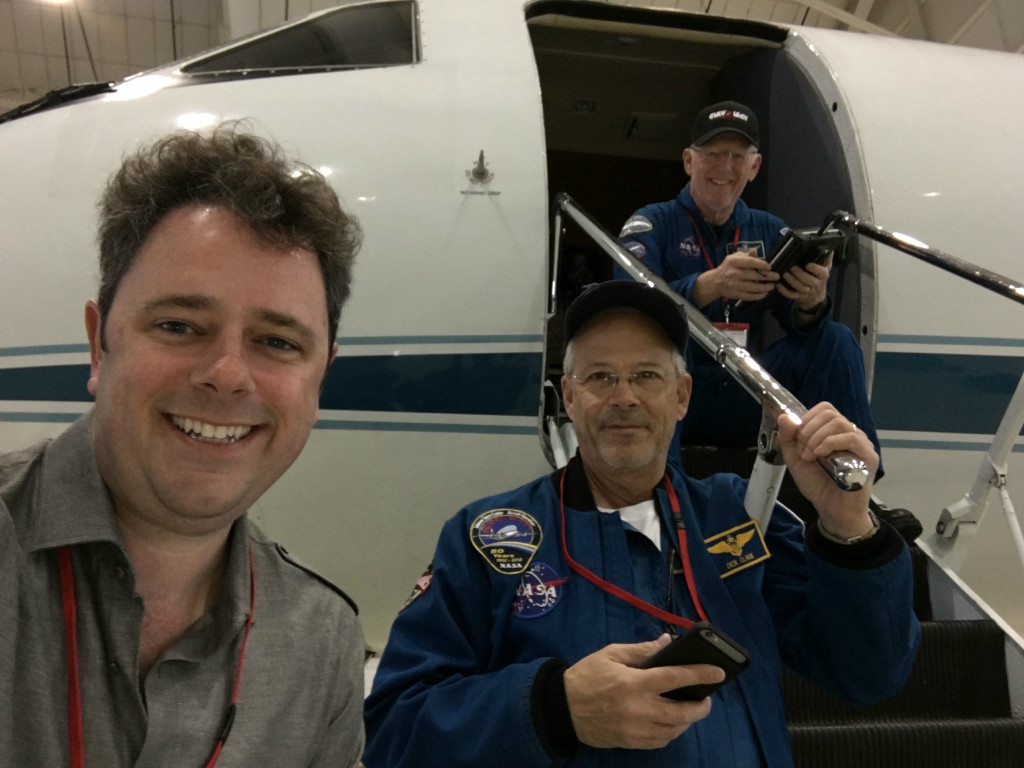
by Patrick Lynch / KEFLAVIK, ICELAND /
The seven-person Oceans Melting Greenland (OMG) team arrived in Keflavik earlier this week to make its first round of research flights over Greenland’s eastern coast. The team is flying NASA’s GLISTIN-A radar to measure the thickness of glaciers that flow to the ocean.
OMG will pave the way for improved estimates of sea level rise by investigating the extent to which the oceans are melting Greenland’s ice. OMG will observe changing water temperatures and glaciers that reach the ocean around all of Greenland from 2015 to 2020.
Josh Willis, an oceanographer at NASA’s Jet Propulsion Laboratory, Pasadena, California, specializing in sea level rise, is the principal investigator of the OMG campaign and a graduate of Second City Hollywood improv Conservatory Program in Los Angeles. Before the first flight got underway, Josh described the goal of OMG, how he arrived at his career, and how exercising his sense of humor improves his science.
“I was very curious from a young age. I asked my parents questions about how things worked all the time. Eventually, when they stopped being able to answer them, they gave me books instead of answers. I liked understanding how things worked and why they worked the way they did.
“I went to grad school for physics for two years and I failed out. Yes, you can write that. I loved taking classes and learning the physics of the last 100 years, but all the new frontiers are so esoteric that it wasn’t fun anymore. I was definitely losing interest. I tried to be an astronomer for a little while and that didn’t suit me. When I realized I wasn’t going to be a physicist I was a little lost.”
Willis was soon connected with the Scripps Institution of Oceanography, where he eventually earned his PhD.
“I became fascinated with Earth science. I very quickly realized I wanted to study things that were important, so I started working on climate change. My adviser gave me a project to study the Tasman Sea between Tasmania and Australia. I was looking at how much the sea was warming and what that meant for sea level. When I finished, my adviser asked me what I wanted to do next. And I said, ‘I want to do the same thing – except for the whole world.’
“That was really the thing that launched me on this career of studying sea level rise. In a way, global sea level rise is the most useful number for counting how much we’ve changed the climate, for counting our footprint on the planet. Two-thirds of the planet is ocean. So if the oceans are rising, that’s two-thirds of the planet that is changing its shape.
“In the future the biggest contributors to sea level rise are going to be the ice sheets. If we get 3 feet, or 5 feet or even 6 feet by 2100, it will be because Greenland and Antarctica are melting. So these are big pieces of the puzzle. And Greenland seemed like a good one to attack. There are a lot of measurements of Greenland itself, but we really don’t have a good handle on how big a role the ocean is playing in this melting.
“What we hope to do with OMG is ultimately shed light on how much Greenland is going to melt in the future.”
